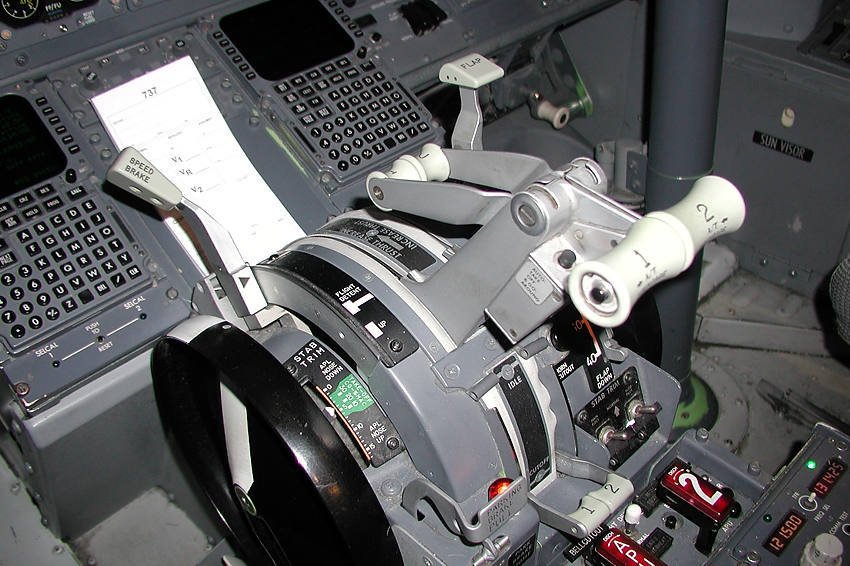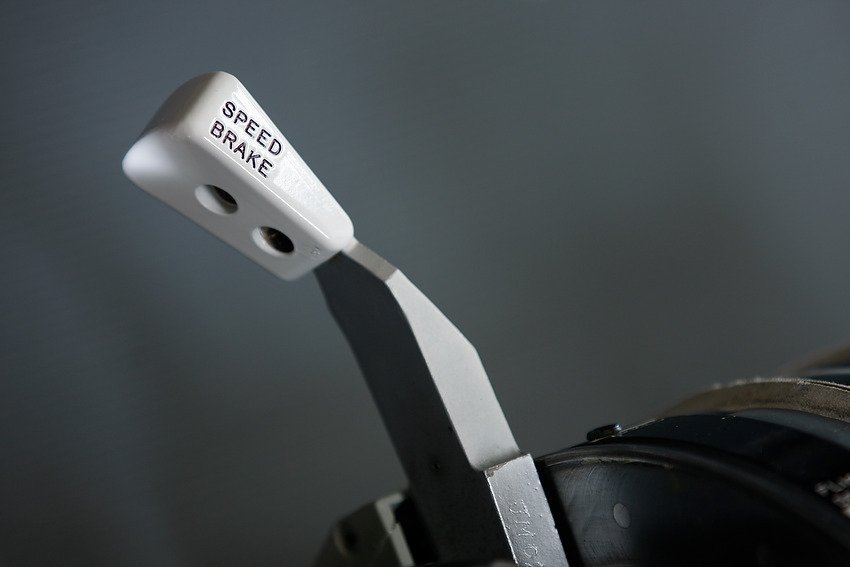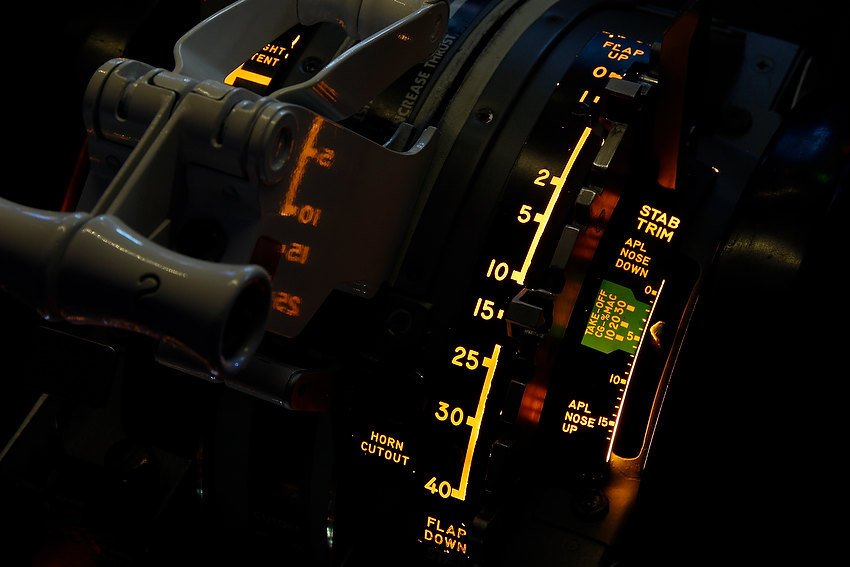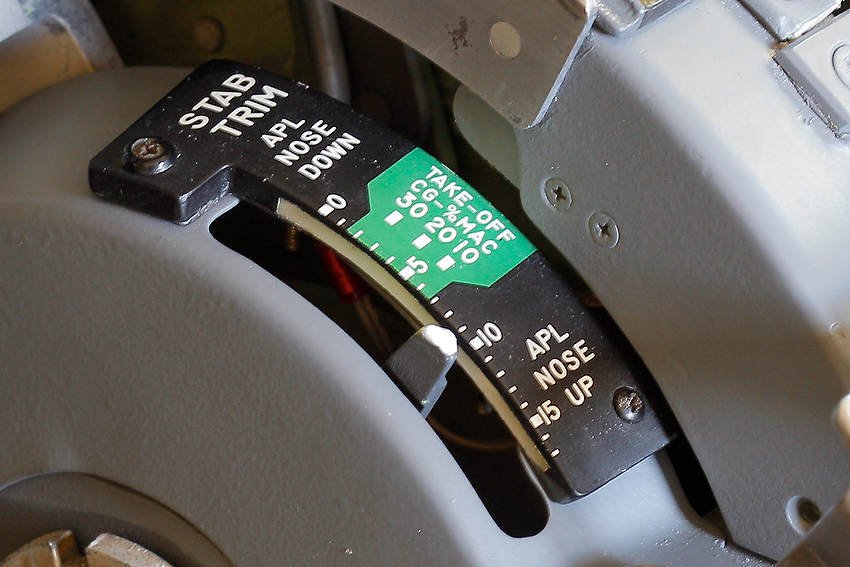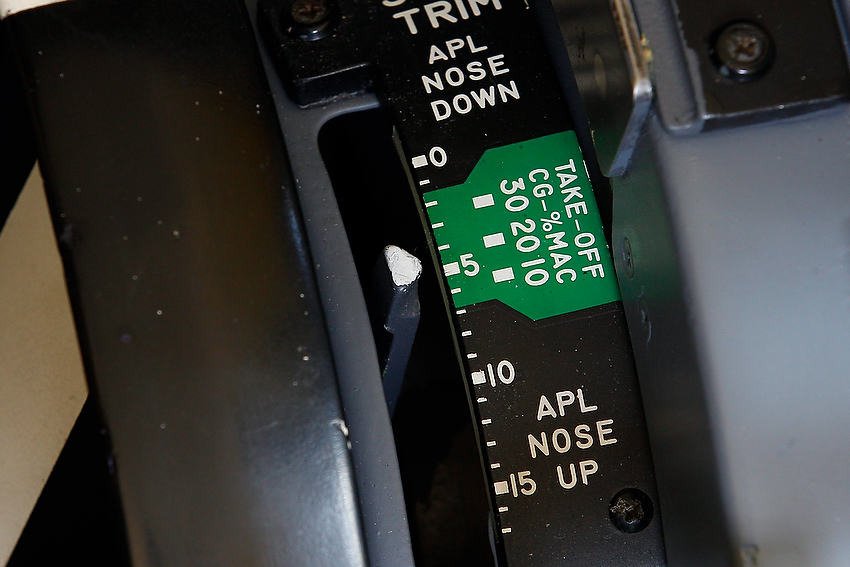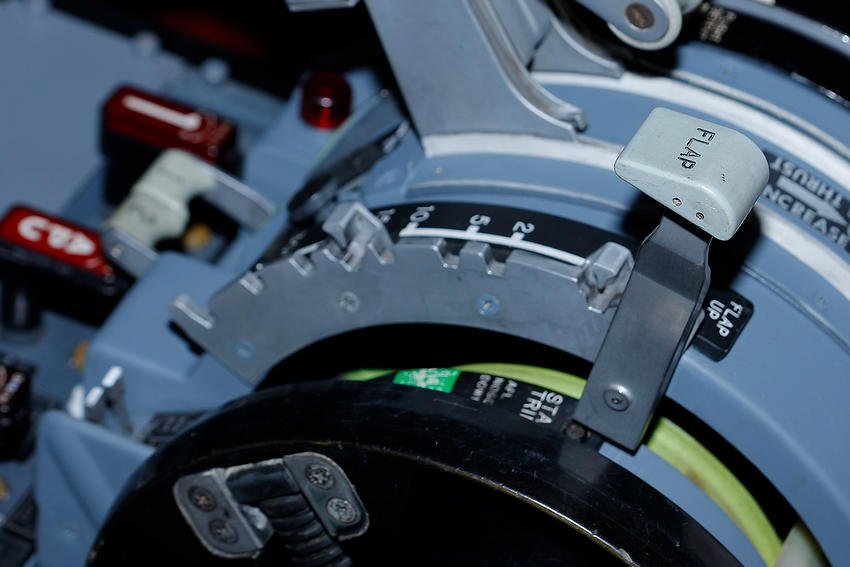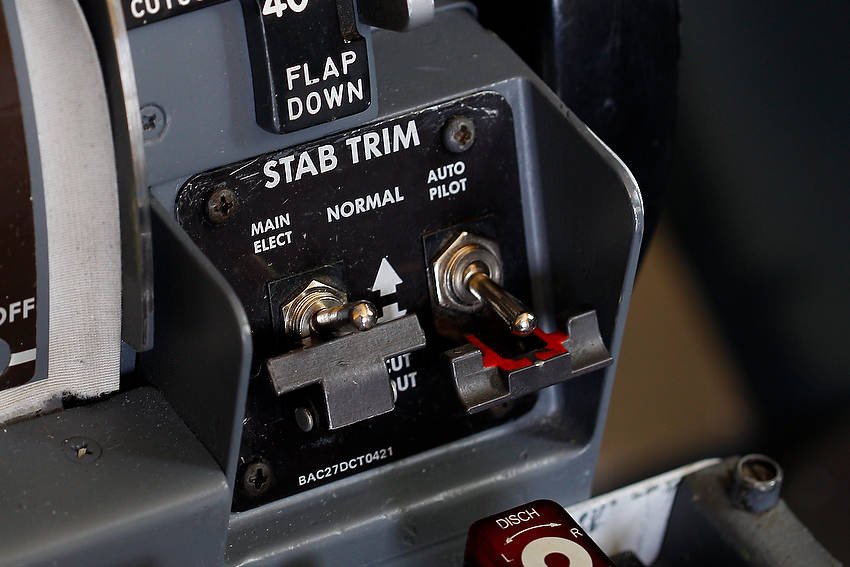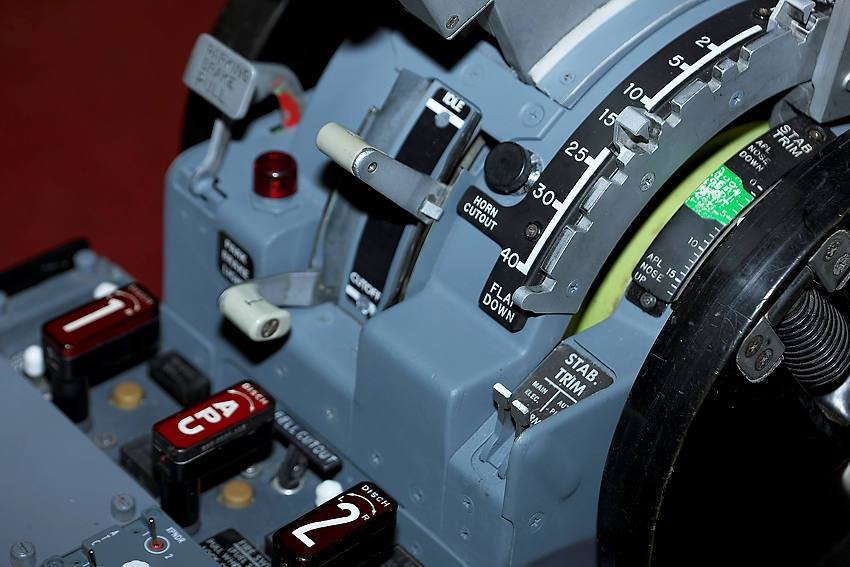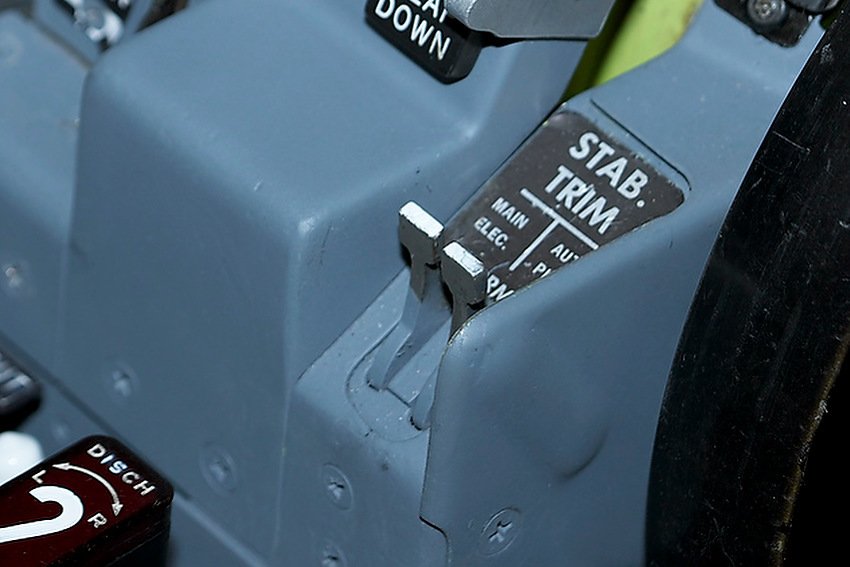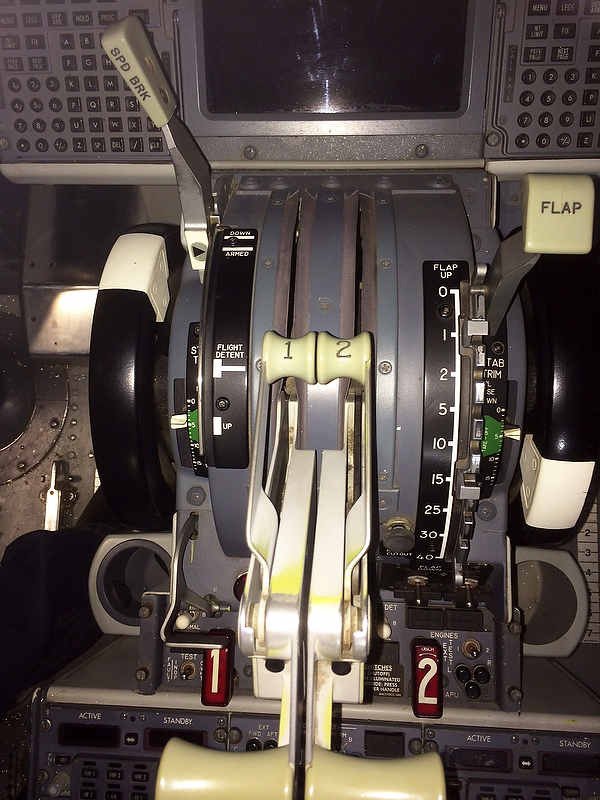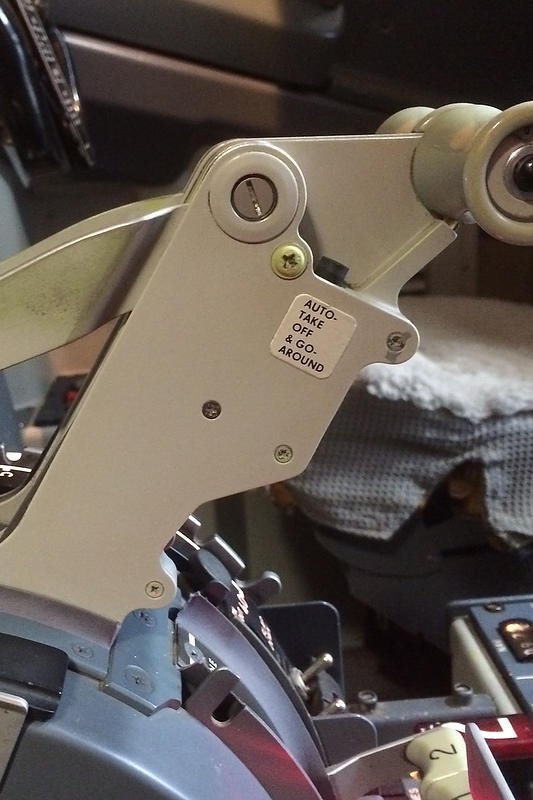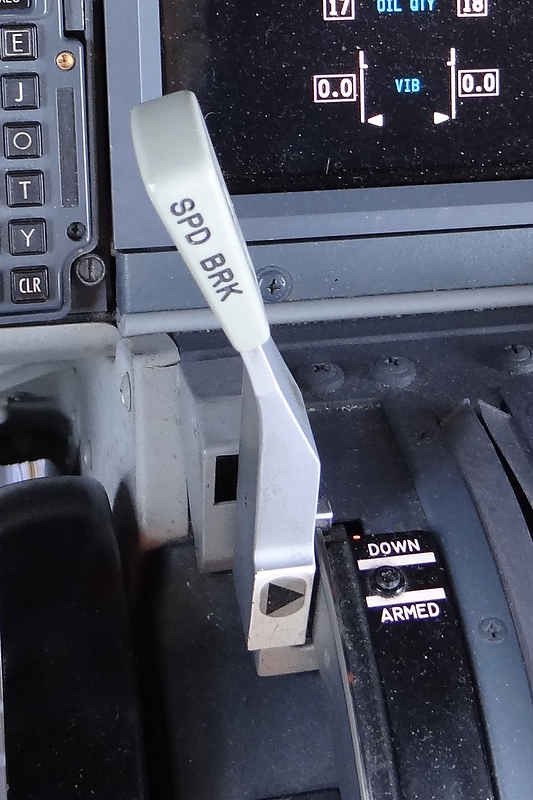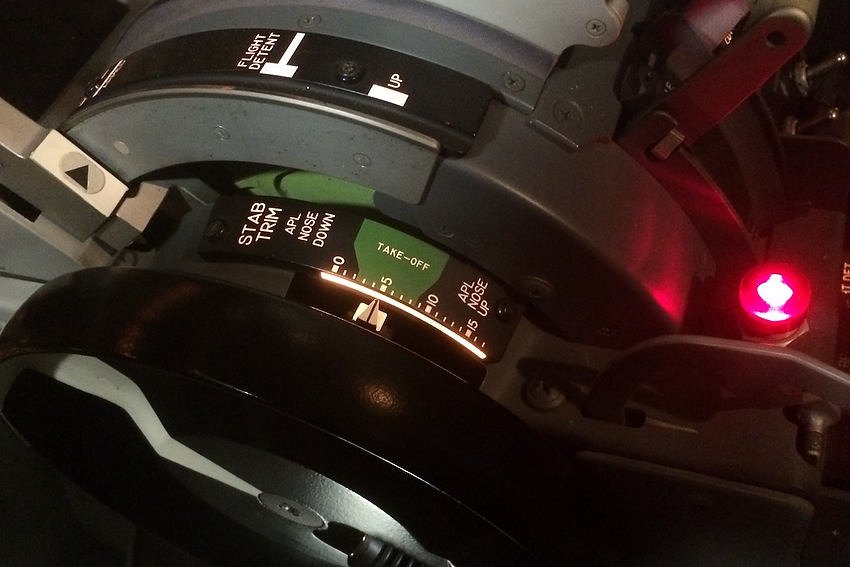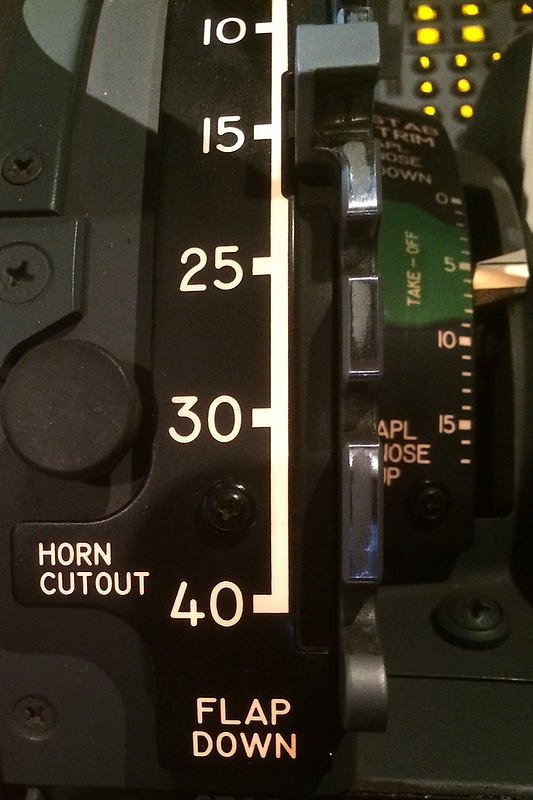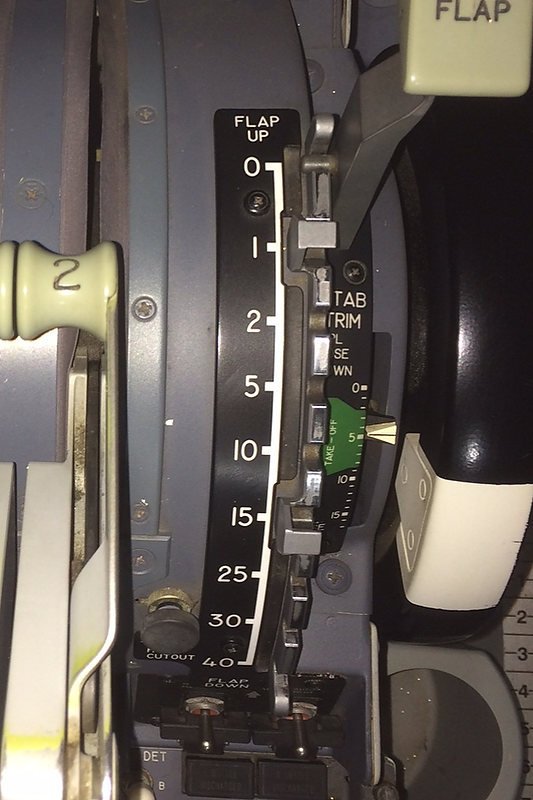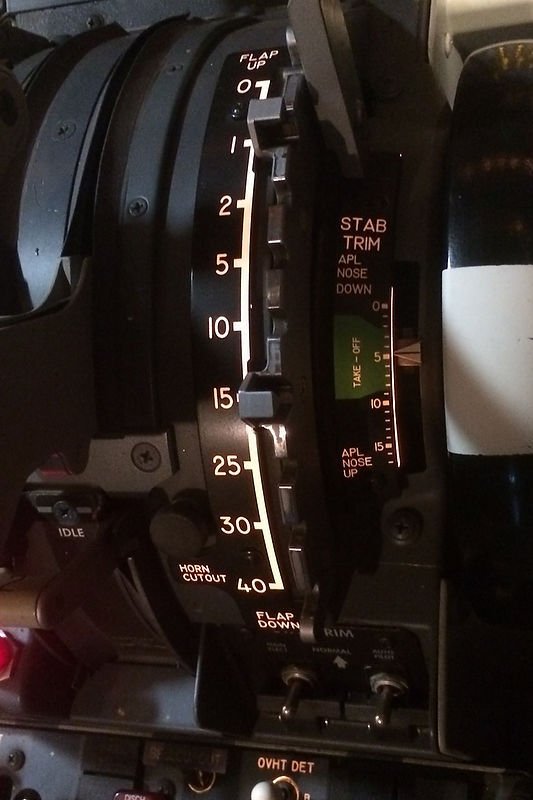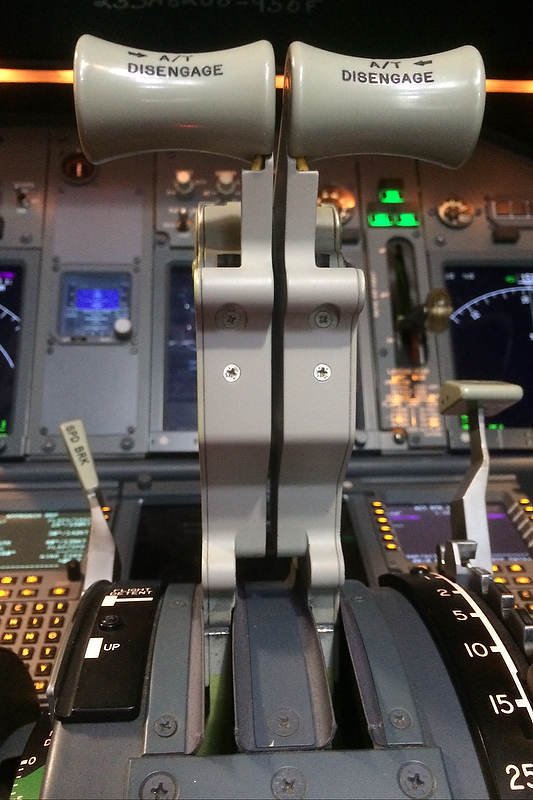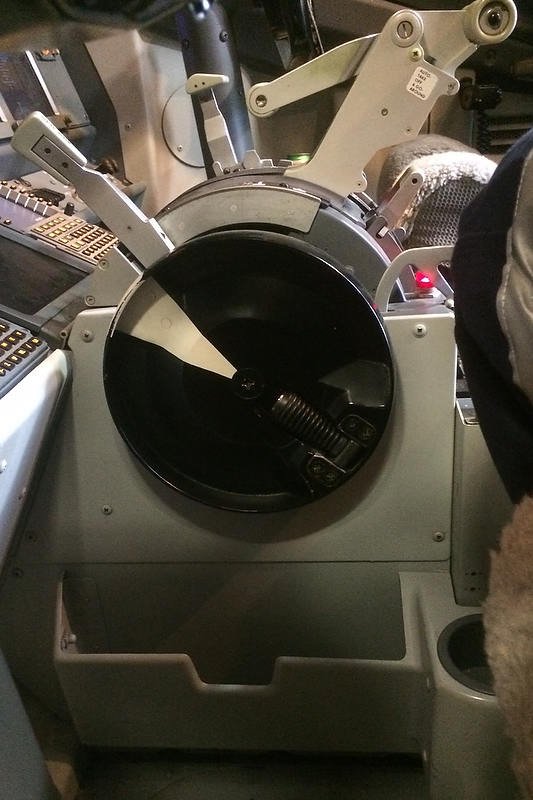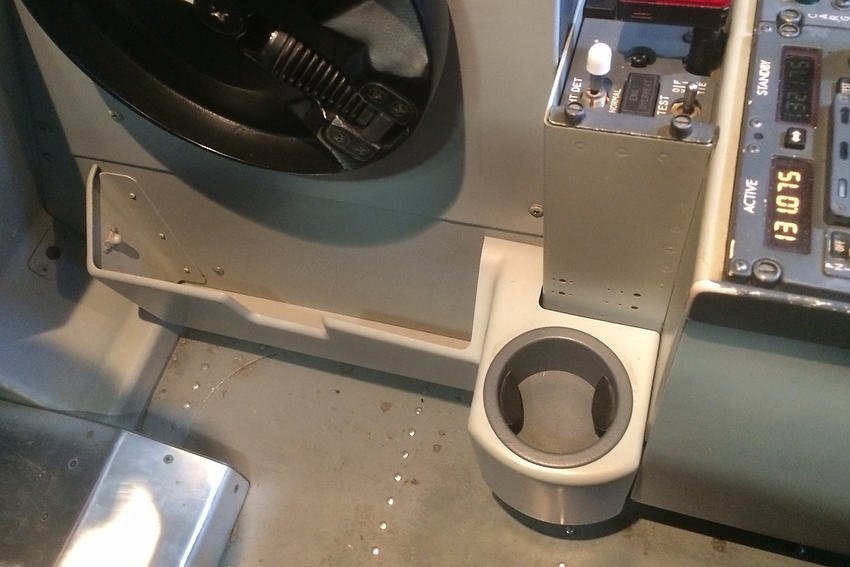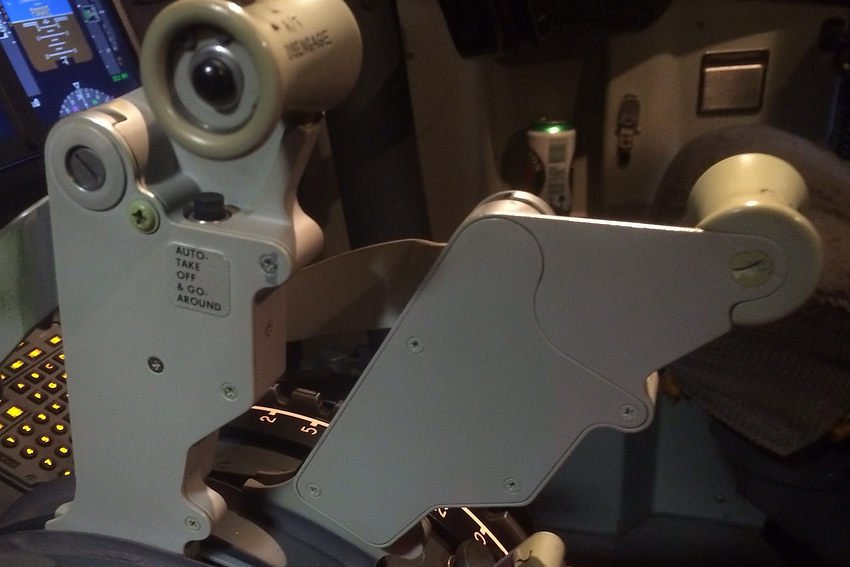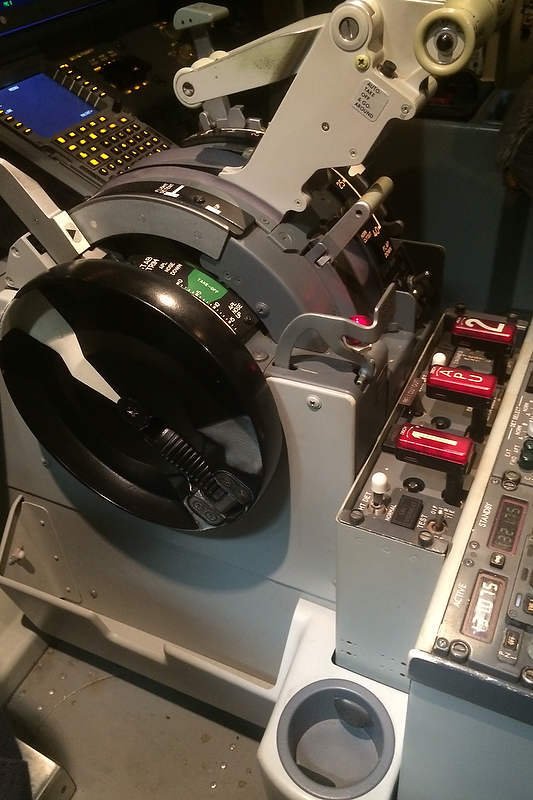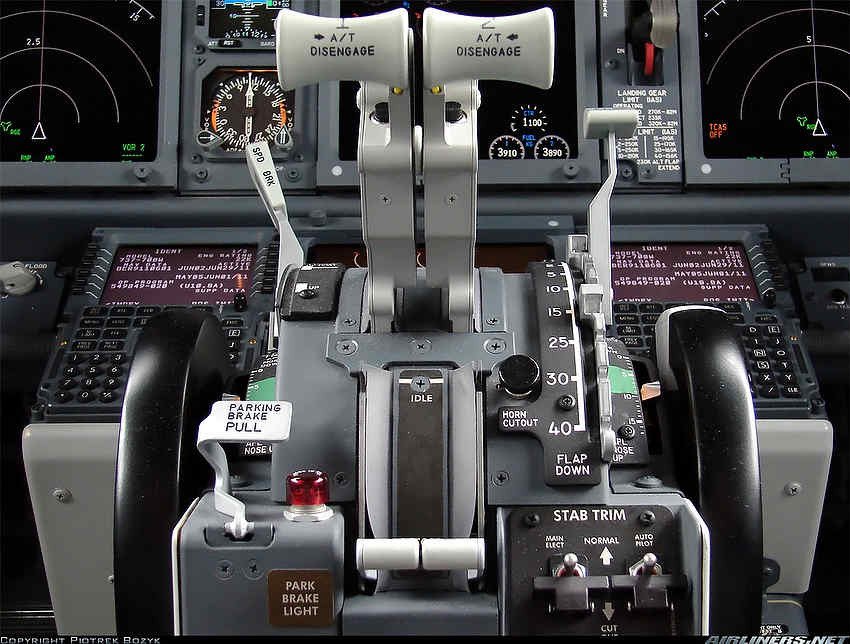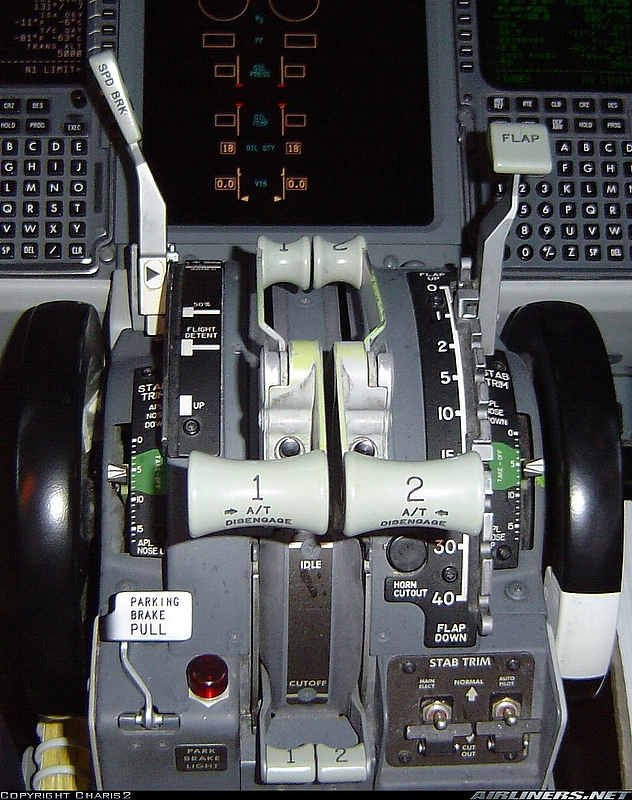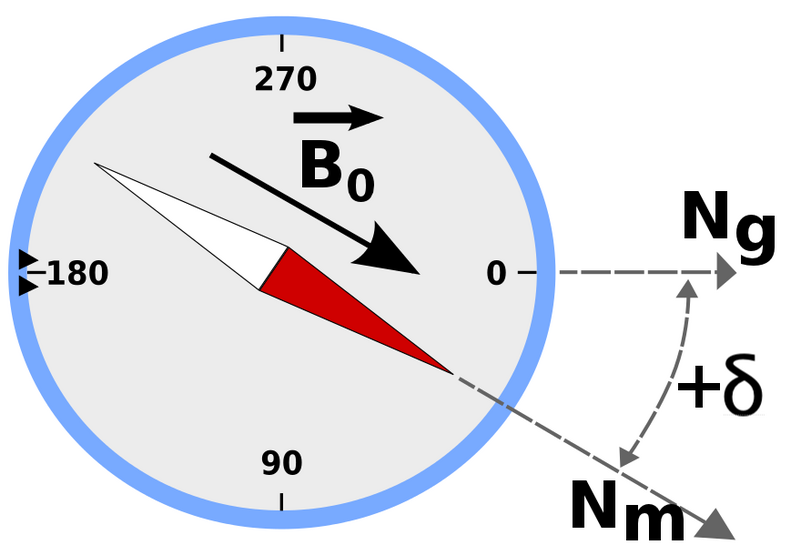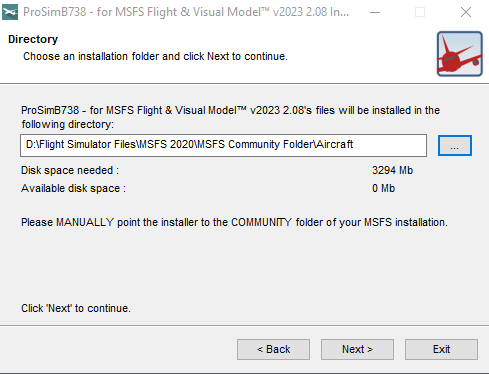The mechanics of the speedbrake system has been completely overhauled, however, the logic that controls the speedbrake has remained as it was.
Several problems developed in the earlier conversion that could not be successfully rectified. In particular, the speed of the speedbrake lever when deployed was either too fast, too slow, or did not move at all, and the clutch mechanism frequently became loose.
Other minor issues related to the condition korrys that illuminate when the speedbrake is either armed or extended; these korrys did not always illuminate at the correct times.
Rather than continually‘tweak’ the earlier system, it was decided to replace the motor and clutch assembly with a more advanced and reliable system. To solve the arming issue, a linear throw potentiometer has been used to enable accurate calibration of the speedbrake lever in Prosim737.
To read about the first conversion and learn a little more about closed-loop systems and how the speedbrake works, please read the companion article PRIOR to reading this article. This article only addresses the changes made to the system and builds on information discussed in the other article: 737 Throttle Quadrant Speedbrake Conversion and Use.
Motor and Clutch Assembly
A 12 volt motor is used to power the speed brake. The motor is mounted forward of the throttle unit above the Throttle Communication Module (TCM). The wiring from the motor is routed, in a lumen through the throttle firewall to a 12 volt busbar and several relays. The relays, mounted inside the TCM, are dedicated to the speedbrake.
Attached to the 12 volt motor is a slipper-clutch assembly, similar in design to the slipper clutches used in the movement of the two throttle thrust levers. The clutch can easily be loosed or tightened (using a pair of padded pliers) to provide the correct torque on the speedbrake lever, and once set will not become loose (unless exposed to constant vibration).
The slipper clutch and bearings have been commercially made.
Speedbrake Mechanics and Logic
In the real Boeing 737 aircraft, buttons are located beneath the metal arc that the speedbrake travels. If you listen carefully you can hear the buttons clicking as the lever moves over the button. These on/off buttons activate as the speedbrake lever travels over them, triggering logic that causes the speedbrake to move. The logic uses a combination of relays that act in concert with ProSim737 to replicate the various conditions that the speedbrake moves.
The first part of the mechanical system involves two micro-switches that are located on the throttle cam. These switches open and close at predefined thrust lever positions. This in turn opens or closes relays that correspond to specific conditions that are needed for the speedbrake to deploy.
The second part of the system uses micro-buttons that are located along the speedbrake lever arc. These buttons are part of the OEM quadrant and are used to trigger various relays to either move the speedbrake lever up or down. As the speedbrake lever moves over one of the buttons, the button will trigger a relay to either open or close (on/off).
To replicate the speedbrake system logic requires the use of several relays (speedbrake armed, stowed, engaged on landing, or placed in the UP position). A Phidget 0/0/8 relay card has been used and this card is mounted inside the Throttle Interface Module (TIM). An another relay card comprising 4 relays is located in the Throttle Communication Module (TCM). These relays provide the logic for landing and rejected takeoff conditions (throttles fully retarded, squat switch activated, and airspeed 80 knots in relation to RTO).
The schematic at the bottom of the page shows the logic in more detail.
Speedbrake Korry (armed and extended)
The speedbrake system is a closed system, meaning it does not require the avionics suite (ProSim737) to operate. However, the illumination of the condition lights (speedbrake armed and extended on the MIP) is not part of the closed loop system and the korrys must be configured in ProSim737 (switches/indicators).
An easy workaround to include the arm korry to the closed loop system is to install a micro-switch beneath the speedbrake lever arc. The position of the micro-switch needs to correspond to the position of the lever when it is moved to the armed position. Then, when the level travels over the micro-switch the arm korry will illuminate.
Speedbrake Operation
To connect the mechanical system to the avionics, a linear throw potentiometer has been connected to a Leo Bodnar BU0836A Joystick Controller card (the controlelr card is mounted in the Throttle Interface Module (TIM). This enables the movement of the speedbrake lever to be calibrated in such a way that corresponds to the illumination of the korrys and the extension of the spoilers on the flight model. The potentiometer has been mounted to the throttle superstructure on the Captain-side.
Using a potentiometer enables the DOWN and ARM position to be precisely calibrated in ProSim737 (config/throttle & MCP/Levers).
The following conditions will cause the speedbrake lever to deploy from the DOWN to the UP position.
When the aircraft lands and the squat switch is activated;
During a Rejected Takeoff (RTO). This assumes that the autobrake selector switch has been set to RTO, there is active wheel spin, and the ground speed exceeds 80 knots; and,
If the reverse thrust is engaged with a positive wheel spin and a ground speed in excess of 100 knots.
Point 3 is worth expanding upon. The speedbrake system (in the real aircraft) has a built-in redundancy in that if the flight crew forget to arm the speedbrake and make a landing, the system will automatically engage the spoilers when reverse thrust is engaged. This redundant system was installed into the Next Generation airframe after several occurrences of pilots forgetting to arm the speedbrake prior to landing.
Therefore, the speedbrake will deploy on landing either by activation of the squat switch (if the speedbrake was armed), or when reverse thrust is applied.
Speedbrake Logic
The following logic have been programmed into the logic that controls the operation of the speedbrake.
Rejected Take Off (RTO). RTO can occur after the 80 knots call-out. Spoilers will extend to the UP position when reverse thrust is applied. The speedbrake lever moves to UP position on throttle quadrant. RTO must be armed prior to takeoff roll;
Spoilers extend on landing when the squat switch is activated. For this to occur, both throttle thrust levers must be at idle (at their stops). The speedbrake lever must also be in the armed position prior to landing. The speedbrake lever moves to the UP position;
Spoilers extend automatically and the speedbrake lever moves to the UP position when reverse thrust is applied;
Spoilers close and the speedbrake lever moves to the DOWN position when the thrust levers are advanced after landing (auto-stow); and,
Speedbrakes extend incrementally in the air dependent on the lever position (flight detent).
The logic for the speedbrake is 'hardwired' by using a combination of relays from a Phidget 0/0/8 relay card and a 4 relay card mounted in the Throttle Interface Module (TIM) and Throttle Communication Module (TCM) respectively. The logic has not changed from what it was previously.
Speedbrake Lever Speed
When the speedbrake lever is engaged, the speed at which lever moves is quite fast. The term ‘biscuit cutter’ best describes the energy that is generated when the lever is moving; it certainly will break a biscuit in two as well as a lead pencil. Speaking of lead pencils, I have been told a favorite trick of pilots from yesteryear, was to rest a pencil on the throttle stop so that when the speedbrake engaged the pencil would be snapped in two by the lever!
In the real Boeing 737 aircraft the movement of the lever is marginally slower and is controlled by an electrically operated actuator (28 volts DC).
In theory, the slower speed that the speedbrake lever moves in the real aircraft should be able to be duplicated; for example, by suppressing the voltage from the 12 volt motor using a capacitor, using a power supply lower than 12 volts, or by using speed controllers. These alternatives have yet to be trialed.
It is unfortunate that most throttle quadrants available to the simulation community do not include the actuator. The actuator is not part of the throttle unit itself, but is located in the forward section under the flight deck. The actuator is then connected to the speedbrake mechanism unit via a mechanical linkage.
In the real aircraft, the speedbrake lever and actuator provide the input via cables, that in-turn actuate the speedbrakes. There is no feedback directly from the hydraulics and all operation is achieved either by manual or electric input of the speedbrake lever.
Actuator Sound
The sound of the actuator engaging can easily heard in the flight deck when the speedbrake engages (listen to the below video). To replicate this sound, the sound of the actuator engaging was recorded. The .wav sound file was then uploaded into the ProSim737 audio file library and configured to play when the speedbrake is commanded to move (squat switch).
The .wav file can be shortened or lengthened to match the speed that the lever moves.
Synopsis
I realize that the above may be difficult to easily understand. In essence this is how the speedbrake operates (in no particular order):
A potentiometer enables accurate calibration (in ProSim737) of the DOWN, UP and ARM position of the speedbreak lever. This enables the condition korrys to illuminate at the correct time.
Micro-buttons have been installed beneath the arc that the speedbrake lever travels. The position of each button, is in the same position as the on/off buttons used by Boeing (the buttons are still present and you can hear them click as the speedbrake lever moves across a button).
The micro-buttons are connected to a Phidget 0/0/8 relay card (4 relays). The relay card is located within the Throttle Interface Module (TM).
A further relay card comprising four relays is mounted in the Throttle Communication Module (TCM). These relays control the logic in relation to the stowed and arm position as well as the illumination of the condition korrys.
The logic for the system is controlled by a number of relay cards mounted in the Throttle Interface Module (TIM) and Throttle Communication Module (TCM). This logic triggers relays to turn either on or off as the speedbrake lever travels over the micro-buttons. This is exactly how it's done in the real aircraft.
The speedbrake system is a closed-loop system and does not require ProSim737 to operate.
The speedbrake moves from the ARM position to the UP position when the squat switch is triggered (when the landing gear touches the runway). The squat switch is a configured in ProSim737 (config/gate/squat switch).
Gallery and Video
The upper video demonstrates the movement of the speedbrake lever. The lower video, courtesy of U-Tube, shows the actual movement of the lever in a real Boeing aircraft.
The video is not intended for operational use, but has been shown to demonstrate the features of the speedbrake system.
If you listen carefully to both videos, you will note a difference in the noise that the actuator generates. I have been informed that the 'whine' noise made by the actuator is slightly different depending upon the aircraft frame; the actuator in the older classic series Boeing being more of a high whine in comparison to the actuator in the Next Generation aircraft.
The lower video is identical to the schematic above, however, is animated.






